There’s been a ton of interest as of late in using drones within sports. This interest comes from many different angles. First is the more traditional approach of simply using the unmanned aerial vehicle as a platform for videography and photography. We already see this in various forms today. The 2014 Olympics in Sochi being probably the most visible and earliest mainstream example of that, but more recently ESPN utilized this technology in certain events last week at the X Games. Similarly, within the endurance sports world, the Norseman Triathlon annually produces some epic race videos using drone technology.
While this first area is no doubt interesting and will continue to grow – it’s actually not what I think is as applicable to readers here. Rather, I suspect folks here are much more interested in drones that follow you during your sport. Within this realm, the drone is effectively operated by you while you ride, run, or do whatever adventure sport you choose.
It’s this second area that I’m focusing on in this post. It’s not that the first area isn’t interesting (it is), it’s just that there are countless drone manufacturers out there producing untold models to take care of that. Whereas within the ‘follow-me’ realm, it’s a much smaller group with rather diverse implementations.
The Basics of Drones and Sports:
Now that we’ve established the focus of the post as being those drones that follow you around autonomously, let’s talk a little bit about the key technology areas.
First up is that follow-me functionality. The term ‘follow-me’ is widely used within the industry to categorize any drone that can follow you autonomously as you move around the landscape. This is typically done by you having a GPS device on your person, which then transmits your position to the drone that’s airborne. In most of these configurations you specify an altitude to stay at, and then a specific ‘view’, such as to the side/above/behind/etc…
The challenge with follow-me functionality is obstacle avoidance. Obstacle avoidance refers to the drones ability to not run into a tree or other objects in the way (wires/telephone poles/houses/snowman/terrain/etc…). While Intel at CES this year showed off some cool technology coming down the road, it’s not quite ready yet for prime time implementation in drones shipping today. Similarly, there’s also been some incredibly cool DIY attempts at it too.
Some of the companies, such as Airdog, have talked about different ways to approach the problem. For them they’ll be implementing through software the ability to create no-fly zones on a map. The idea here being you just touch the areas to avoid. This isn’t autonomous, but rather pre-planned. So it’s fine for smaller areas, but less ideal if you venture out of the pre-planned areas.
It should be noted that Airdog is also claiming inclusion of ground avoidance sensors, which means that it’ll not run into the ground if the elevation has changed. Though we haven’t seen any test footage of this capability yet to my knowledge.
Next, we have cameras. Obviously, the point of putting the drone in the air in this context is to record you. Most of the units today cater to sticking standard action cams on the drone. This is mostly due to weight. The lighter the camera, the more battery flying time. Most of the units get about 15-20 minutes of flying time. GoPro is the most popular camera mounted to drones, though the Sony action cams are also supported on Airdog.
But it isn’t quite as straight forward as just mounting a camera to the front of the drone. See, in order to get the cool shots that you typically associate with drones, you want a gimbal. A gimbal (depending on the type) allows the drone to move while keeping the camera steady. Gimbals have different modes and capabilities, usually defined on how many different axes they can employ to keep the camera stabilized (and yes, that’s correct plural form of axis). Below is a quick video I shot showing how a gimbal works. The key thing to note is that the camera stays level – except when I turn it side to side, as that axis is locked.

But it’s not just about staying level with a gimbal. It’s also about being able to control where the camera is pointed. For example, the 3DR IRIS+ will control the pitch (up/down angle) of the camera to keep you in the frame as it flies over you. Without this, the camera would just point off in space and not really follow you. This ability to autonomously control pitch is super-critical for action sports follow-me modes.
Finally, note that while many action cams might attach to a GoPro mount, it’s not as simple as just mounting say, a Garmin VIRB, to the GoPro mount on a gimbal designed for a GoPro. That’s because gimbals are carefully designed with the exact weight and weight distribution of the camera being balanced.
With those basic concepts out of the way, let’s start talking about the drone models on the market.
The Players: An Overview
There’s a lot of drone players today in the market. This year at CES there was a solid chunk of a pavilion dedicated to them, and realistically next year it’ll be 3-4x that size (easily). Plus, they’ll likely have to expand to an Outdoor Demo day in the desert, just as Interbike does.
But while there are many players, there are less that are actually focusing on sports. Or rather, focusing on any form of follow-me mode. For example, the immensely popular DJI Phantom series lacks an autonomous follow-me mode. And while one could technically hack some solutions together, it’s far from being sidestream, let alone mainstream. Which doesn’t take away from the Phantom – I love my Phantom2 and have put together some fairly pretty videos with it with minimal effort. But none of them were autonomous while following me in sport.
So for this post I’m really focusing on companies that are working on solutions that are actually pushing and featuring sport modes to follow you by itself. Of course, most of these companies allow some form of manual mode to just fly it like normal, so that’s usually always still there.
Also note, there are a handful of less mainstream entrants on the market that I haven’t covered. This post isn’t intended to cover every possible company out there, but more of looking at the technology and some of the units that are generating the most interest.
The Players: 3D Robotics IRIS+:
First up we’ve got the 3D Robotics (3DR) IRIS+. Out of all of the units listed here, this is the only one actually shipping today. In a lot of ways it’s similar to the more widely known DJI Phantom2, in terms of capabilities. The hardware isn’t quite as polished and consumer friendly as the Phantom, but the software capabilities exceed that of DJI at the ‘free’ tier (DJI also has various software applications, but those require additional hardware in most cases).
Now while the 3DR IRIS+ has many functions that go beyond sport, I’m just focusing on their implementation of the follow-me mode. It’s this mode that can be used in sports to have the drone follow you by utilizing an Android phone with the app running on it, and the adapter hanging out the bottom of your phone. You’ll see the adapter below:
I’ve done a few different test activities in follow me mode, mostly running (so it was easier to stay within range of a cyclist or other person carrying the remote in case something went wrong). The way the software works is on the app you set a given type of follow-me mode. These can include being above you, behind you, to the side of you, or even orbiting you. Within this you then specify a given altitude to follow, as well as the radius to keep away from you. For example, you might set 10m (~32ft) up, and 5m away.
Below is an example where I set the device at about 15m, just enough to clear the trees, and told it to follow behind me. You can see the video below. I added a very slight warp stabilizer to the footage in Adobe Premier to smooth it out:

Within this mode, the camera automatically follows me (or at least, where it thinks I am), despite what the quadcopter is doing. You see this most easily at the end of the footage when the connection is lost and it begins to return back to the initial departure location before I stopped it.
Now you’ll notice that the camera does an OK job of following me. Not great, but OK. Having done a bunch of tests with it now I’ve found that higher elevations tend to yield better following results. This is because it gives the drone more room to fudge the shot. Whereas at lower elevations (i.e. below 10m) you tend to see a lot of ‘stop and go’ type motion. Unfortunately, higher elevations yield lesser video quality of the subject.
Additionally, I’ve found that there’s clearly a bit of a feedback loop delay – which is most obvious if you were to start sprinting. During my simple tests the evening prior, you can see examples of where the unit simply took too long to follow me and was left in the dust. Here’s a compilation of raw and unedited clips from that evening, so you can get a feel for what the raw footage tends to look like:

The biggest issue though with cell-phone based implementations though is that it requires some form of transmitter attached to the phone. In the case of 3DR, the little adapter seen below:
This connects via micro-USB to the bottom of an Android phone. The immediately obvious limitation there is lack of iOS support. The second and actually bigger challenge is that the micro-USB connection just isn’t ideal for sports. I found it often jiggled just barely enough (being in pockets or even handheld) that it would lose the connection. The moment that occurs the drone stops following you. Both the phone platform and connectivity limitation issue would be easily resolved with just using Bluetooth to the transmitter pod instead of USB. It’s more than fast enough, and quite frankly a much cleaner solution. It would also make it easier to have the phone in a more protected location and then the transmitter pod mounted elsewhere. Of course, as you’ll see in the next section – Airdog has resolved that issue entirely with a dedicated watch-style solution.
Overall the IRIS+ is an interesting option for basic follow-me functions, but I don’t think it’s all that realistic for autonomous sports action today. The unit is just too big (doesn’t collapse down, isn’t easy to transport). And the software, despite how the video above might come out, is often far too flaky to be dependable. My ratio of usable footage to footage where the drone decided to stop following me for various reasons is exceedingly not in my favor (and these were in highly controlled situation).
The Players: Airdog:
Both Hexo+ (next section) and Airdog were Kickstarter projects that hit the market within a few days of each other this past summer, both aiming for somewhat of the same market. Airdog however has a much stronger sport-focus. In fact, I’d argue Airdog is probably the only unit that’s almost 100% focused on sports. Unfortunately, it’s also the most expensive at $1,295+.
The majority of the other drones today require the use of a smartphone in order to track your location in a follow-me mode. The GPS on the smartphone takes your location and then transmits it to the drone. The drone in turn follows you. All fine and dandy, but the smartphone is in some ways the weak point (as you saw in the 3DR case above). With Airdog, they’ve created a wrist control unit, sorta like a super-oversized watch. That wrist unit not only has GPS in it, but also the transmitters required to tell the drone where you are and what to do.
This is crucial because it removes a dependency on smartphones, which in a scenario like this may actually be a bit of a weak link. The dedicated wrist unit meanwhile is waterproof and allows you to also control some of the movements of the drone. This means you won’t have to dig your phone out of your pocket anytime you want to have the drone do something.
Next, the Airdog does have a gimbal, and they not only support the GoPro, but also the Sony action cams.
Lastly, Airdog can fold up – ideal for travel but also for stashing in your backpack. It easily fits in a standard backpack for hiking, cycling, or even some dedicated trail running.
Airdog was on-hand at CES for demos, though their drone was tethered to the ground due to CES rules around drone use at the show. Unfortunately they didn’t conduct a public demo away from the exhibition halls as some other companies did.
While I’m very excited about Airdog, I’m also a bit wary of where they stand timeline-wise. They recently noted they plan to start delivering to certain early backer groups this month – but we just aren’t seeing the level of photographic evidence of that typically seen by most companies when you near a release. They’ve also last week slid their non-Kickstarter orders out to Q2, which means sometime between April and June. Still, even if they’re hitting later spring – the physical aspects of the unit and the Airleash make it worthwhile waiting to see how things shake out.
The Players: Hexo+:
Hexo+ is another member of the Summer 2014 Kickstarter launch club. Their unit isn’t actually a quadcopter, but rather a six-propeller variant known as a hexocopter. As such, it’s a bit bigger than the IRIS+ seen in the previous section.
I was able to spend a bit of time with the Hexo+ crew in CES for an afternoon, getting to understand not only the unit as they near release, but also their control app. And it’s the app that I found most interesting, especially for sports follow-me mode.
The app has some of the same concepts seen in the IRIS+ in terms of follow-me modes such as being above, to the side, etc…
But the difference is the configuration of those modes is much more flexible. Specifically, you can string them together to form a series of action shots. Additionally, Hexo supports more dynamic autonomous moves where you fly between two points and keep you as the focus point during that ‘move’. See, with the Droidplanner app and the IRIS+, you do basically one mode at a time, and it’s pretty static. So you have it follow you for a bit, and then you have to stop and change the settings. That’s not terribly great for video production later.
Instead, with Hexo+, you can set these modes to complete one after another. So you can have it follow you, then go into flying above you, and then doing a sweeping arc around you.
Perhaps more than anything else…it’s just a heck of a lot cleaner and easier to use app. It’s not that there’s anything fundamentally wrong with Droidplanner, but rather, this just has better UI design principals. And to that end, is designed in a way that’s easier to use.
Now the Hexo+ folks are reasonably close to shipping here in the next few months – and based on what I saw, I think there’s a pretty good chance of that happening. For sport use this is a bit tricky. It’s a bigger unit, which will limit certain scenarios (for example, you won’t be able to stash it in your backpack for a long hike, or take it with you riding to use later). But it will be better in cases such as mountain biking from a parked car locale where you’re in a park and just want it to loiter above you for 15-20 minutes as it cycles through various cinematic shots (and as you ride). Also note that unlike Airdog, Hexo+ doesn’t have any form of obstacle avoidance (hardware or software).
On Kickstarter I’ve ‘backed’ the Hexo+ project (well, I’ve actually backed all of these here), so I’m certainly looking forward to testing it out as they hit release.
The Players: Zano:
Next up we’ve got Zano. I’m probably the most excited about Zano, purely from a size perspective. It’s a hand-sized unit that has follow-me mode in it, and can easily be stashed in a backpack. That makes it perfect if you’re out riding or running all day and want something lightweight that you could deploy for a couple of key shots. Of course while there are other micro-sized drones on the market, they haven’t catered to autonomous follow-me modes.
Zano went up on Kickstarter this past November, and has been one of the few projects that really seems to understand the concept of keeping backers updated. They’ve got more regular status updates than any other Kickstarter project I’ve seen (drone or otherwise). As of this writing, they’ve published 16 updates in roughly three months. Pretty impressive.
Of course, despite the $3.5M raised, the hard part of the journey still lies in front of them: Delivering the product. They specified a June 2015 delivery date, so still about 4 months out. Given the product state currently, I’d say they probably have a legit chance of hitting that. They seem to be much more buttoned up than other projects in the space, in terms of manufacturing and planning.
Now the challenge with Zano is it lacks a gimbal, which means the shots won’t be as smooth or flexible as what you see with gimbal systems. It also means the camera footage is only directly what the camera is looking at (horizontally). So it couldn’t point downwards and take a ‘top-down’ shot. Nor could it fly from behind, pass over you, and maintain focus on you the entire time. It could however rotate to your left/right and keep focus on you that way.
It’s the size though that makes this unit so appealing when combined with a follow-me mode. Being substantially smaller than most of the other units here it’s less likely to cause concern from folks about safety. Obviously you’ll still want to be safe with it, but the impact of a nudge into a person is substantially less worrisome. And similarly, if you crash the unit, at sub-$250, the cost of an incident is also less painful.
The Challenges: Hardware Size & Camera Flexibility
While there are many players, there are also many challenges. To start we begin with hardware. Hardware on these drones ranges from rather large (Hexo+) to tiny (Zano). Of course when compared to commercial drones these are all rather small (in weight and size), but the focus here is sports for consumer use.
In the middle you have players like the Airdog and Pocketdrone, which while they expand to a larger size while flying, it’s designed to fold up and stash in your backpack. Heck, even the DJI Phantom2 has a nifty backpack that I’ve got, while the 3DR IRIS+ is definitely not easily transportable into the woods.
The hardware size though in turn drives some of the situations it can follow you in. For example, should avoidance detection mature enough, then something like the Zano is much better to be able to follow you through the trees. Whereas a larger drone might get caught up. Similarly, drones that are smaller can be more easily taken further while hiking or riding than larger ones.
On the flip side, the smaller the drone gets, it typically means a smaller payload. That’s why the Zano has a built-in camera rather than a GoPro mount. And as much as companies like to tout their cameras, they rarely provide video quality anything near a GoPro or dedicated action camera. Nor do they provide the connected app features found on the GoPro or other action camera lineups.
Finally, we get to gimbals. This is the pod-like system that hangs below a drone that allows the camera to remain stabilized and in some cases pointed at a subject. For example, the 3DR IRIS+ will keep you in the picture at all times, despite what you’re doing or which why the drone is flying. But you won’t find this in the smaller drones like the Zano – which means the video quality and video ‘drama’ will seem less…awesome. Actually, it’ll probably suck for anything but directly behind you or side follow-me shots where the camera can remain level.
In general, you’ll find that you’ll need a gimbal for any form of true follow-me modes. Otherwise the shots you’ll get will be less ideal for sports. But of course, it’s all a balance today between size and features. Within a year, it’ll likely be less of a compromise.
The Challenges: Software
Next on the challenges list is the software that controls the drones. Right now this is a mixed bag, with most apps for drones ranging from geeky suck, to barely acceptable. Don’t get me wrong – I’m all about geek. But as I explain in the next section, if this industry wants to succeed beyond the next year or two, it’s going to have to make things easier to fly so that people get in less trouble.
The software of today is highly limiting for any sort of follow-me functionality in sports. Take for example Droidplanner (the app of the 3DR IRIS+). While a functional app when it comes to tell your drone to follow you, there’s many caveats. You can’t lineup action shots. It’s one type of follow-me mode until you stop and tell it otherwise. Though this is an area that competitor Hexo’s app aims to solve by allowing you to create a list of shots to capture.
Second is that the follow-me apps are highly dependent on dual micro-USB connected transmitter adapters, that almost exclusively run on Android. As one who’s done a fair bit of testing in this area now, these micro-USB connectors suck for action sports because of their propensity to jiggle loose. As I noted earlier, using some sort of Bluetooth connection to the transmitter elsewhere on your person would alleviate this.
Next is that these apps almost exclusively depend on your phone’s GPS, whose accuracy tends to wander a bit. And, it tends to lag, so you often have cases where the unit isn’t quite keeping up. Airdog of course solves this and the previous USB problem by creating a separate GPS transmitter armband that’s fully self contained – no phone required. It remains to be seen in real world non-scripted use how well this holds up.
But perhaps the biggest issue with software is that failure is too often accepted as a viable outcome. I’ve now lost one drone (3DR IRIS+) to the Atlantic ocean due to a software bug that was found months prior in Droidplanner but not yet fixed. The same bug almost sent another IRIS+ to the ocean two weeks ago. Based on the data I sent them, 3DR has noted to me that a fix for the bug has been filed, but how long would that have been there had it not happened to me specifically? And this isn’t an issue specific to 3DR mind you, it’s somewhat of a mindset within the industry that fly-aways and software-driven crashes are just part of life. It’s almost a mentality that is similar to that of everyone eventually crashes on their bike, you eventually might be victim to a software bug in a drone.
On the other hand, this surge of interested consumers is forcing companies interested in the mass market to clean up their act – which is definitely positive. Hopefully a year from now things are less finicky.
The Challenges: Regulation
Without question the biggest challenge facing drones in sport is simply regulation. Not regulation today (which is somewhat tame), but the regulations of tomorrow. Over the last 12 months there’s been a tidal wave of cities, states and countries that have looked to enact rules around drone use. In some countries (such as Canada), the regulations for casual use in sport are fairly acceptable (less so in city environments however). Whereas in the US, it’s a mixed bag depending on where you live.
For example – the US has already banned drone use in all National Parks (thankfully that doesn’t generally include National Forest land, which is specifically excluded and much larger). Nonetheless the knee-jerk reaction was mostly due to issues at a handful of parks, such as someone crashing into a geyser in Yellowstone. And then there’s the whole recent Washington DC fiasco.
Further, some states have recently started down the trail of banning drones altogether, like Colorado’s failed attempt a few weeks ago.
There is no doubt a proper place for regulations. Even as a proponent of drones – there’s simply too many people out there doing too many stupid things to not have some level of regulation. That said, I think looking at some of what Canada has done is a good starting point (though they have some challenging aspects as well).
When it comes to sport use, there are indeed some differences though. For example – regulations that might require flying a specified distance from people (i.e. 25 meters) tends to minimize the quality and/or perspective of the footage in follow-me style shots. Though, these altitude and distance requirements also prevent incidents such as this.
Instead, looking to have different regulations for different size aircraft makes sense (as a number of countries have done). Such that a small Zano unit running into you is far less harmful than that of a larger Hexo+ aircraft. Alternatively, the use of prop guards and the like when in closer contact with people makes sense for some aircraft (though that tends to reduce payload, battery, and/or aerodynamics of the aircraft).
More than anything else though, there’s simply very few people fighting for the industry. While companies like Amazon and others are fighting for commercial use, there’s no major players fighting for general consumer use. In many ways, the rumors of GoPro potentially getting into the business are people’s best hopes for influential pushes for more flexible regulation. Of course, by time GoPro gets to that point it might just be too late.
The Way Forward:
Barring prohibitive regulation, there’s no doubt we’ll see a rise in the use of drones in sports. We’ll see it in mainstream coverage, but also in smaller events. And hopefully – we’ll see many of the devices noted above actually start to ship units to backers and consumers. If that happens on the schedules they promise, then this summer should be full of interesting footage.
But the key thing to remember is that all of the devices noted above are really first generation when it comes to follow-me modes in drones. And the rate of change in the industry is astoundingly fast – both in terms of the drone itself, but also the different camera technology used in conjunction with them, and then the software and devices used to control them. So the devices you see today, will be very different in capability to those you see announced ahead of the holiday season at the end of the year (or at CES 2016 in early January).
Still, no doubt an exciting time ahead. Thanks for reading!
FOUND THIS POST USEFUL? SUPPORT THE SITE!
Hopefully, you found this post useful. The website is really a labor of love, so please consider becoming a DC RAINMAKER Supporter. This gets you an ad-free experience, and access to our (mostly) bi-monthly behind-the-scenes video series of “Shed Talkin’”.
Support DCRainMaker - Shop on Amazon
Otherwise, perhaps consider using the below link if shopping on Amazon. As an Amazon Associate, I earn from qualifying purchases. It doesn’t cost you anything extra, but your purchases help support this website a lot. It could simply be buying toilet paper, or this pizza oven we use and love.

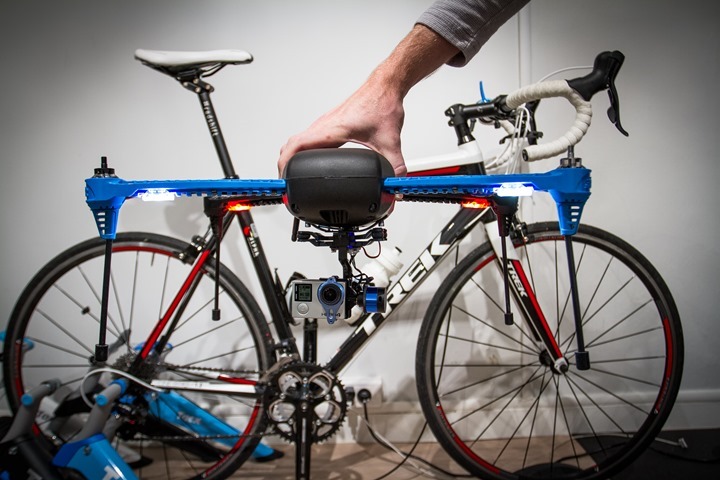
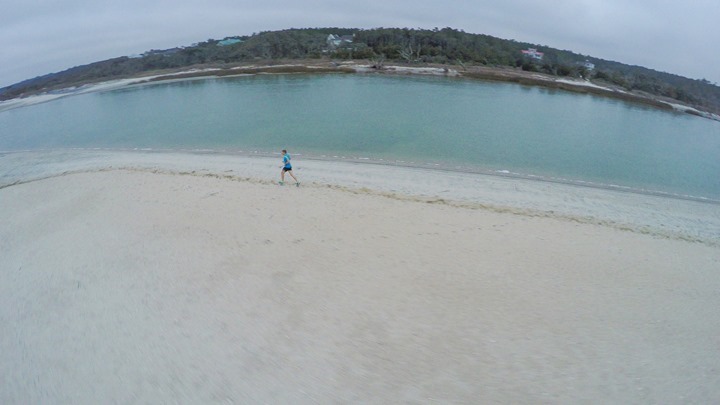

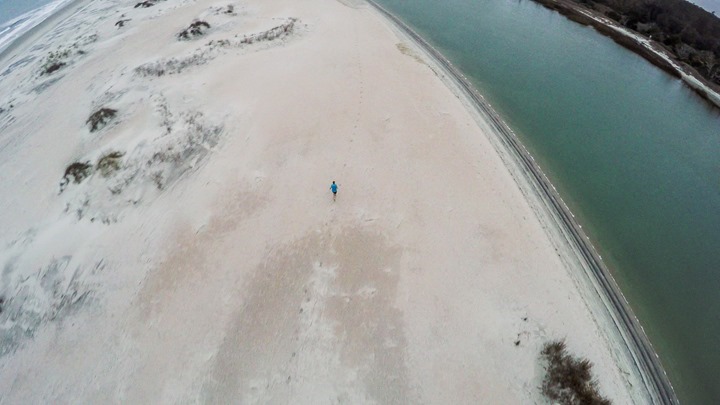
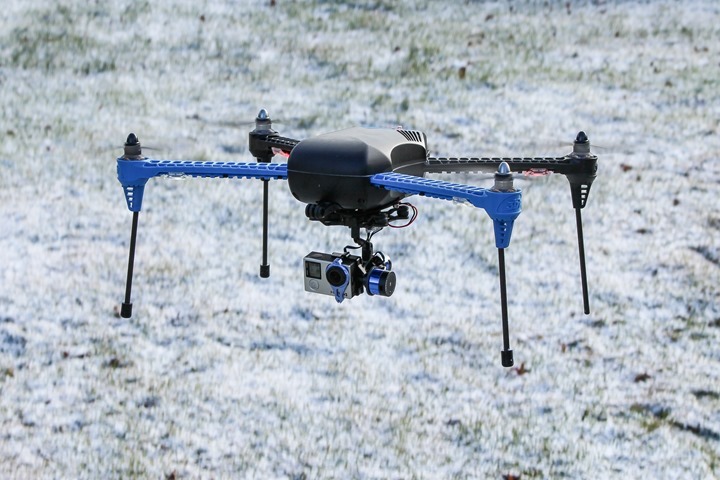

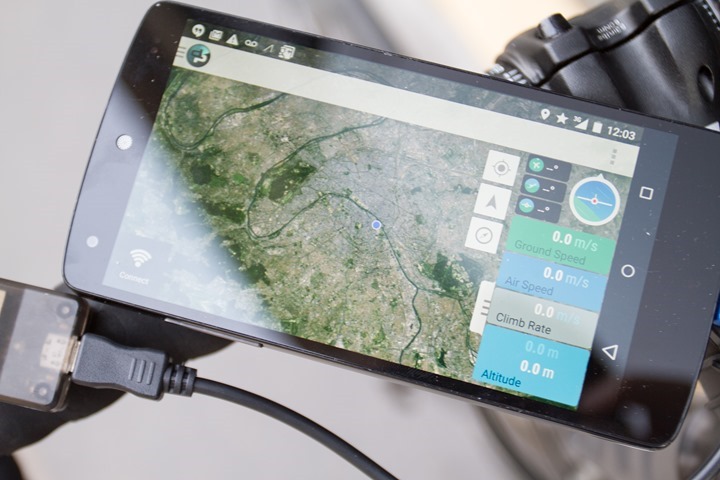
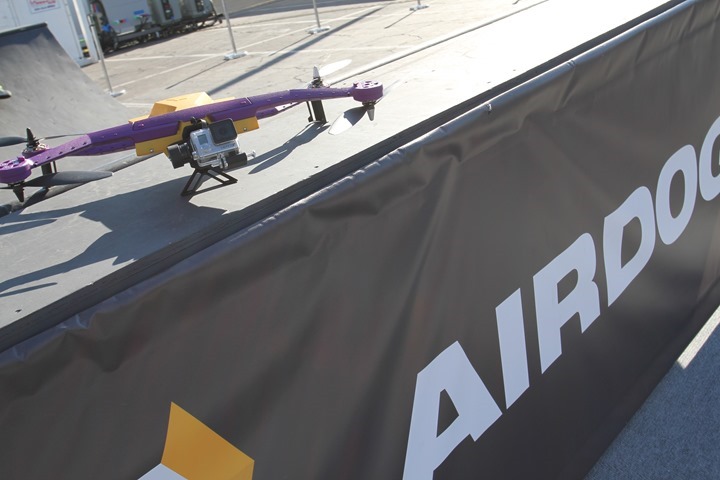
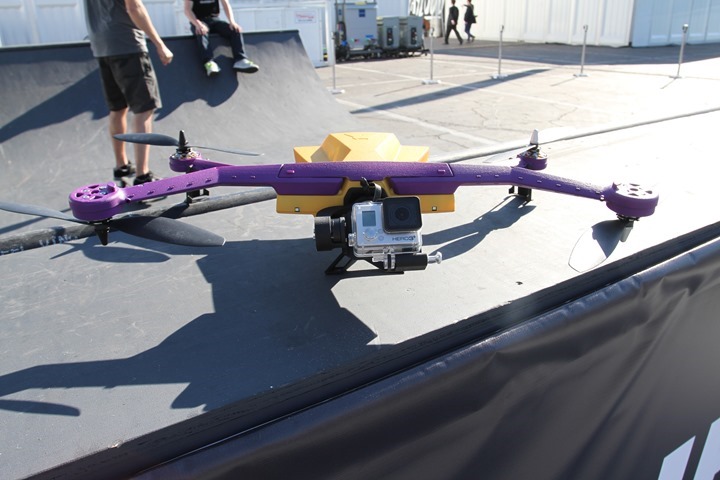

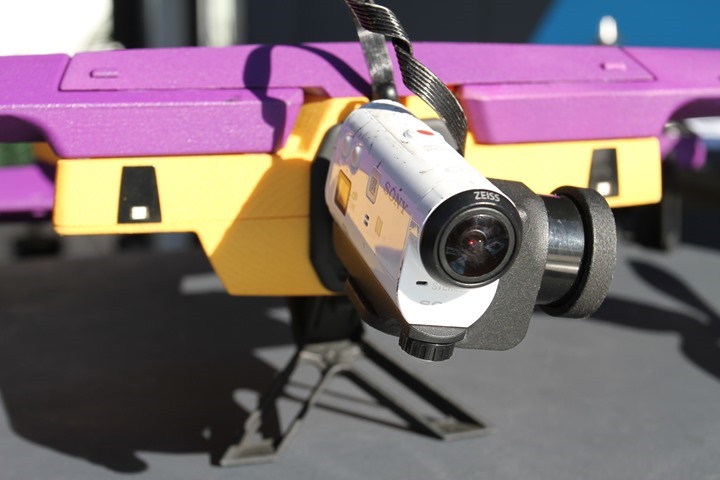
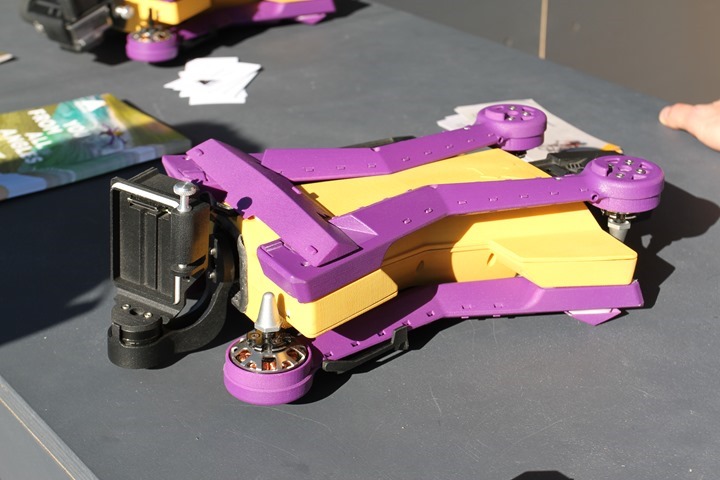
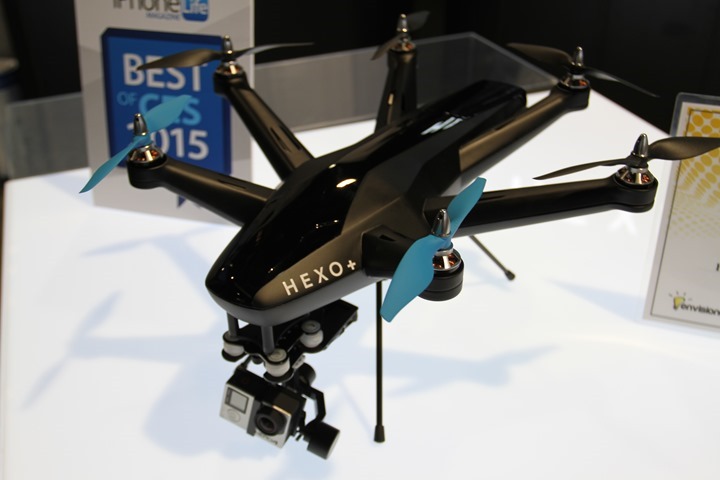
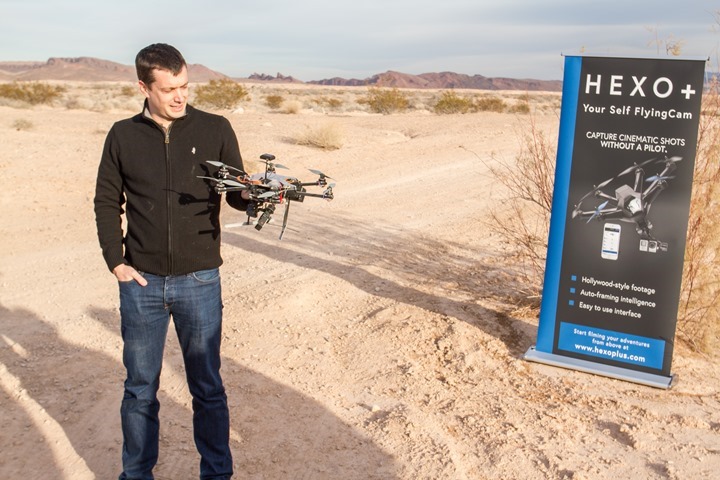
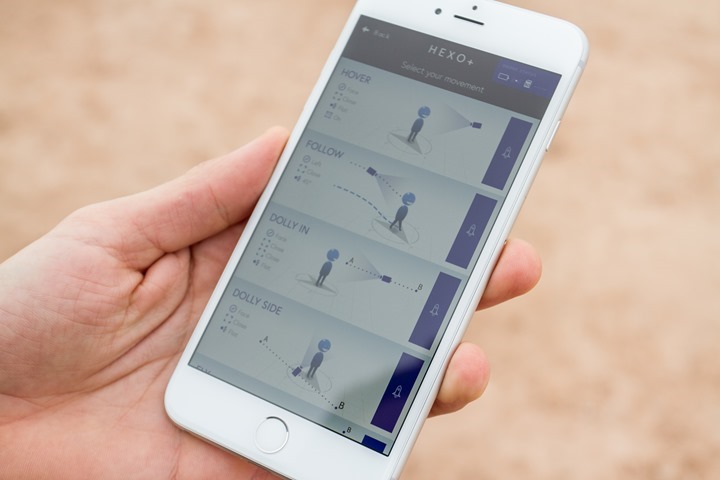
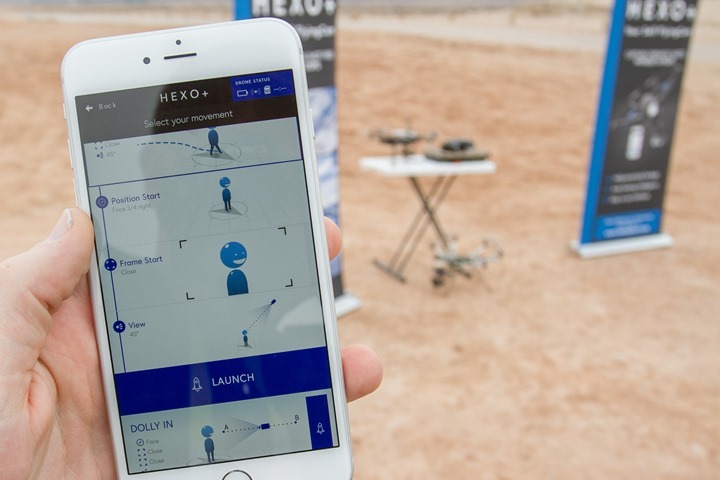
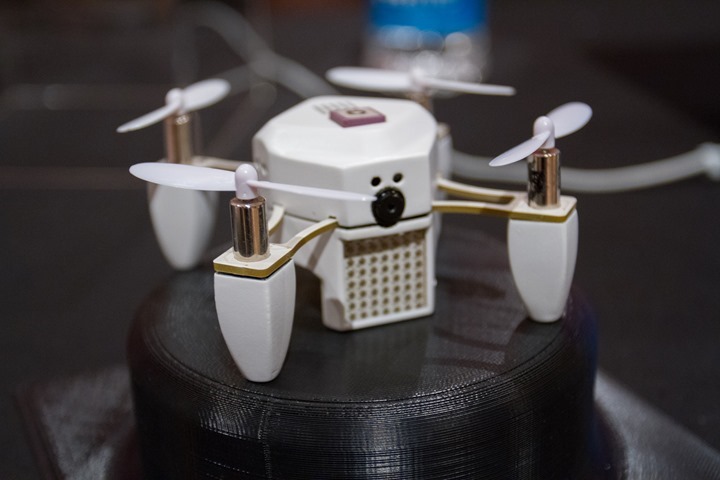
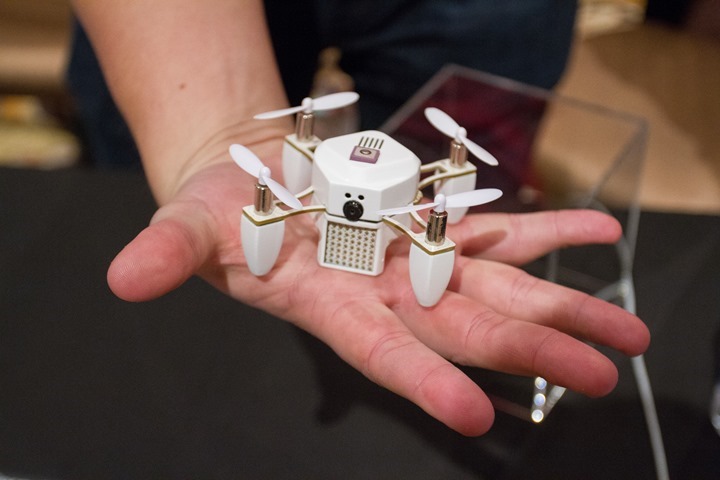
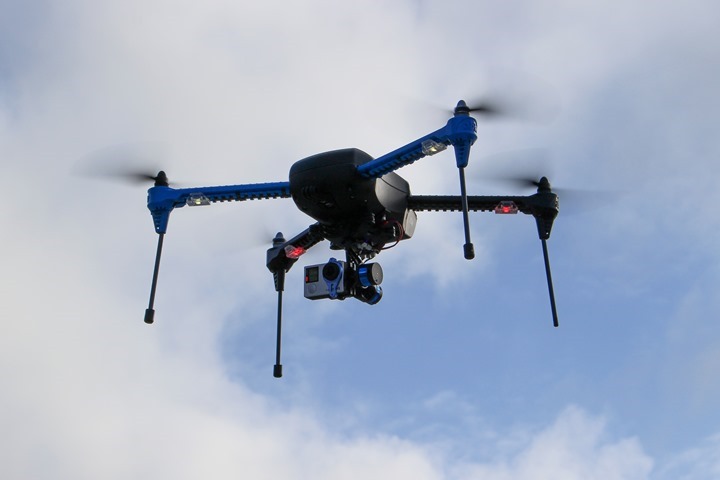

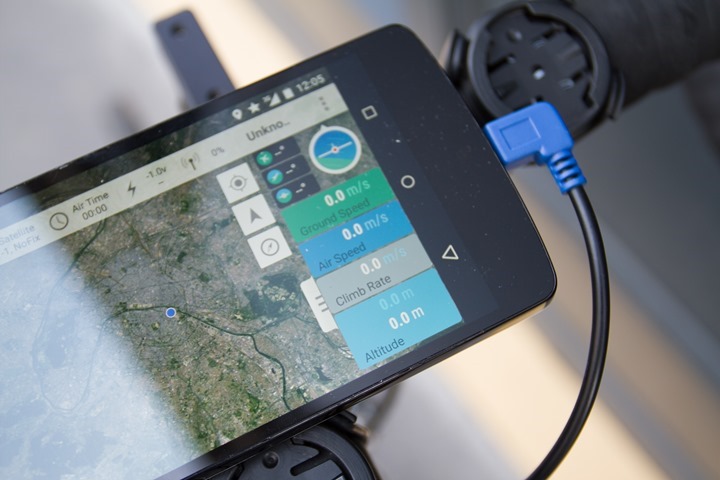























As someone who’s been flying RC planes for a number of years, especially electric, this tech certainly has my attention. I also have many concerns, especially with availability becoming more widespread. I hope that the drone makers are responsible enough to make it clear that these are not craft that someone can just pick up and fly. This is no different than giving a plane and transmitter to someone and expecting them to be able to fly it. People will do stupid things with these drones, just look at the White House incident! These kinds of actions will force regulations whether we want them or not. When I fly my planes, it is always at an AMA sanctioned field and my AMA membership gives me insurance coverage. It’s basically the Wild West with drones right now. Time will tell….
I’m guessing you’re “leery” or “wary” of where airdog stands timeline-wise?
I think there’s a new genre opening up called Angry Bee Cams.
I think it’s grossly misleading to say Colorado was trying to Ban drones. What they were attempting to do was what 20+ other states have done … to put reasonable regulations on drone use. They may have put forth a poorly worded bill, but a total ban was not the intent even according to the bill’s sponsors.
What is interesting is that many attempt to regulate drones come out of attempts to regulate police use of them.
Colorado does have a ban on drone use for hunting but that is from the Div of Wildlife.
Hi Bachoo-
I think your comment goes to the heart of the problem with some attempts at regulation. Laws typically aren’t good at conveying the original intent, instead, they convey the restrictions. In the case of Colorado, in the unlikely scenario that would have passed – it would indeed have effectively banned drone use.
The challenge though is that there are often few backstops or logic checking that goes on with reactive legislation. We’re really only a true incident or two away for reactive legislation on the scale of what was being proposed.
None of which though changes the fact of how that bill was worded and the impacts of it.
Cheers.
Well if you’ve spent any time reading laws you know this problem is not unique to drone laws. (Of course that leads down the path of debate of who should write the laws and the role industry experts) I just objected to the characterization because I don’t think the state was attempting to ban all drones nor was “headed” down that road. Although that may have been the effect. Nor do I think that reading was as clear as your link indicated.
Interestingly, the state gave a $50k grant to drone start up in Co Springs. Lest you think the state is anti-drone.
VERY cool article.
and VERY cool footage from the 3DR!
I can’t wait to see thousands of personal follow-me drones hovering above some mass cycling or running event, all jockeying for airspace.
I’d like to see a couple of thousand of them show up for a 5K race at a park somewhere. Let the carnage begin…
The NYTimes has been weighing in on drones lately. I wrote a letter…
link to op-talk.blogs.nytimes.com
Good post, Ray. My concerns are around regs and acceptable use. My first race that had used drones for video was last spring in Utah. A company was used to record video throughout the course, which consitutes Civil use of UAS, versus Model Aircraft regs. Under such, a permit must usually be secured and the operation follows specific rules and regs. An article in the local paper here stated that the UAS cannot be operated about a crowd of people without approvals.
I wonder if the photography company had the proper approvals. Moreover, I was primarily concerned with the thing crashing on me during the half I was running. They are a distraction for us when competing, in my view, and operators should consider this when operating. Keep them a reasonable distance from us. At one point, the drone was flown maybe 10 feet over our heads–which is quite startling when it comes from behind you.
Dennis
These are some of my exact concerns. Flying 10′ over your head? Unacceptable and dangerous! That’s no different than me flying one of my planes 10′ over someone’s head. I don’t think most folks realize the power that these brushless motors have. Now, put four or more on a drone and the potential for injury is very high. As I said in my first post, it’s the Wild West. If I crash a $5,000 plane at my airfield, it won’t make the news. But, crash a $500 drone in a public space (take your choice) and see what happens. It’s already happened and it’s going to keep happening as more “pilots” buy these craft.
Yeah, I’d agree. 10′ above someones head is pretty nuts in a race situation.
It’s one thing with a smaller drone if you were a participant as part of some sort of closed shoot and they knew what moves you were going to make, etc…
Another hardware issue is how to handles wind. Seems like a larger drone would in general handle wind better then a smaller one
Generally, yes, it’ll handle it better. But I find a lot has to do with software. For example, if I compare the 3DR IRIS+ to the Phantom2, I’ve find in general that the Phantom2 handles the wind better. I was doing a bunch of shooting down in NZ with it, and the winds pretty much never stopped and was just at the envelope of the Phantom2 from a flight standpoint. Whereas when I did work in slightly less windy conditions (but still rather windy), the IRIS+ struggled a bit more.
When it comes to ‘follow me’ I have to ask; ‘why’??
Are we really becoming so narcissistic that we have to see ourselves sweating from every angle and above our balding heads too?
I understand one or two drones being used formally to film an event. I understand using a drone camera to get an aerial perspective or to look where human eyes cannot. But investing a thousand bucks to have one follow me about feels a little creepy to me ….
I think to some degree it’s actually more about minimizing the challenges with following a fast moving athlete and having the computer do that. Said differently: It makes production easier for others.
It’d make great court evidence after a bike crash. Though I can think of more reasons why it’s a bad idea than a good one for that (two dozen drones colliding in mid-air at a traffic light, battery life only long enough to get you a quarter of the way along your commute, just for starters).
“Are we really becoming so narcissistic…?”
I guess you missed the whole selfie hype otherwise you’d know the answer ;)
Hi’ Robert,
I know, I know, I just couldn’t resist saying it. I guess I’m amongst a dying breed of non-selfiers, destined to disappear without a trace (even an aerial one).
Oh my! it looks SIMPLY FANTASTIC! Cool Article!
Very interesting article Ray!
It is really incredible how fast this market developes. A few days ago I saw a YT video about two DJI Inspire copters flying over a vulcano in Iceland. The HD videostream was transmitted live to the groundstation and then further broadcasted to the TV show “Good morning America”. These were really HOT pictures. They said that a live transmission from a copter would have not been possible half a year ago.
Now waiting for the GoPro copter.
Cheers
It’s going to be interesting when tris begin to abandon motorcycles in favor of drone rule enforcement. Drafting? Better hope the eye in the sky isn’t on you. Cutting a buoy on the swim? Drone gotcha. Littering on the bike course? Drone sourced penalty.
I’m all for enforcement. I’m just waiting for “police drones” on the course to become the norm.
It is amazing how quickly this tech has come along! The videos are neat, then chilling when you realize that no operator, but rather a voyeuristic algorithm is keeping that camera trained on you. Like we’re getting a first person perspective of what Skynet is going to perceive ;)
Multirotor photography for sports will be mainstream shortly. I shot our club’s cyclocross practice this past year on my 3DR APM powered machine:
link to youtube.com
I should also note that follow me is a poor substitute for using an operator flying FPV to get the shot they want. People wanting to get good looking shots will need to do the flying themselves.
One more thing!!!
iOS based telemetry for MAVlink based systems (3DR) is available now. Check it out: link to fightingwalrus.com
IMHO the Hexo+ UI reflects a more consumer oriented approach. So I hope they’ll soon mod the hardware to add a collision detection sensor and to have a foldable frame.
I contacted AirDog and they told me to be developing a waterproof version with the most sensible part sealed so that won’t get damaged even if in contact with salty water (they are collaborating with RedBull surfing team)
by the way as a lonely traveler I eager to have one of them, but must be very convenient to carry.
the tiny ZANO should be perfect to just take picture, not for video. A 4-axis gimbal makes the difference
Ray do you have any ideas on how to get the drone’s GPS position data (x,y,z) associated with each photo. I have a Phantom 2 with GoPro 4 black. I’d like to be able to use one of the 3rd party mapping apps, like Pix4Dmapper with my photos. I know when you use the Phantom’s camera you get that data. I don’t use my cell phone to view the images during flight but a 7″ monitor via 5.8 gH frequency.
That’d be tough with a GoPro and Phantom2, since I don’t believe the flight track log is logged anywhere (I could be wrong). With the Iris it is, and I know I saw some threads about that actually just the other day on DIYDrones.
The only way I could think of doing it outside of that is to get a super-small GPS recorder to plop on there (oddly enough, my first search result was this video: link to youtube.com – which is the same unit I actually reviewed a long time ago).
With increasing options in this market each day, will you be doing more of these updates? The Lily Camera at its $500 price point and functions look quite promising. Is it a game changer? Would be interested in your thoughts on its limitations such as 20 minute flight time and lack of obstacle avoidance and 40km/hr speed limit for high speed sports applications such as skiing or cycling.
I probably will the next time something is actually released. I did back Lily (probably 100% due to the crazy part in the demo when it hits the water).
However, I am deeply skeptical about it given the timelines of 9 months from now and the fact that it’s not on a common crowdfunding platform (meaning they can hide quite a bit). Historically speaking, most of the projects I’ve seen on ‘their own’ platforms haven’t come to fruition.
In theory the next sport one that’ll start shipping is the Airdog, now delayed till late summer. I’ve got an order for that as well. We’ll see…
Ray, have you looked into the Plexidrone? Seems like an interesting unit. Not the cheapest out there, but seems to blend a lot of desired features together (follow me, backpack, camera flexibility, etc).
Pretty cool stuff.
So where are we now in 2016.
The Zano KS has folded – with lots of unhappy backers.
The Hexo+ has shipped all it’s KS units, but seems some people are unhappy – certainly haven’t found any independent video (ie not made by Squadrone) that looks any good. Actually, found one link to youtube.com
Airdog – shipping April and no independent videos yet – but looking good….
The 3DR IRIS+ appears to be going strong, with a fair amount of support. Of course, it still doesn’t have obstacle avoidance and some other features – but is AFAIK the best of the bunch.
I’ve a customer who wants to do follow me video of MTB trails, and through the woods too. I think the tech has a way to go for that to happen. Perhaps DJI will jump on this particular bandwagon?
So perhaps a state of the nation type post in April? Unless you’ve anything from CES you’ve not mentioned?
Nice timing..
I’ll publish some stuff here later tonight or early morning on my first experiences in HEXO+ this weekend. Suffice to day, horrible.
As for Airdog, actually, their KS shipments have gone out to some beta folks, and supposedly the non-beta folks this week.
I have no doubt that DJI will jump on obstacle avoidance, but it sounds like it won’t happen this year. :(
Looking forward to it. Makes a change getting the timing right! I did wonder how you were getting on with your Kickstarter backing. I’ve had a couple of unfortunate KS experiences, and am now quite wary what I back.
I have the Garmin VIRB XE Action Camera (not a go pro). Does the AirDog work with Garmin VIRB XE? The support link on their website didn’t work.
No, unfortunately not. The gimbal on the Airdog is specifically designed to support the GoPro Hero3/4 cases.
Is there any update of this article planned?
I’m assuming quite a few things changed since…
Hi Ray,
In case you didn’t read about it. This year’s CeBit (March 20-24 in Hanover/Germany) focuses on drones. Check out:
link to twitter.com
And
link to cebit.de
Cheers,
Lars
Well that’s pretty nifty!
Unfortunately, I’ll be out of town those days!
I would not forget about skydio. Probably has the best “following” mode on the market.
link to skydio.com
Yup, but this was written three years prior to Skydio announcing their first drone.
Here’s my Skydio review: link to dcrainmaker.com